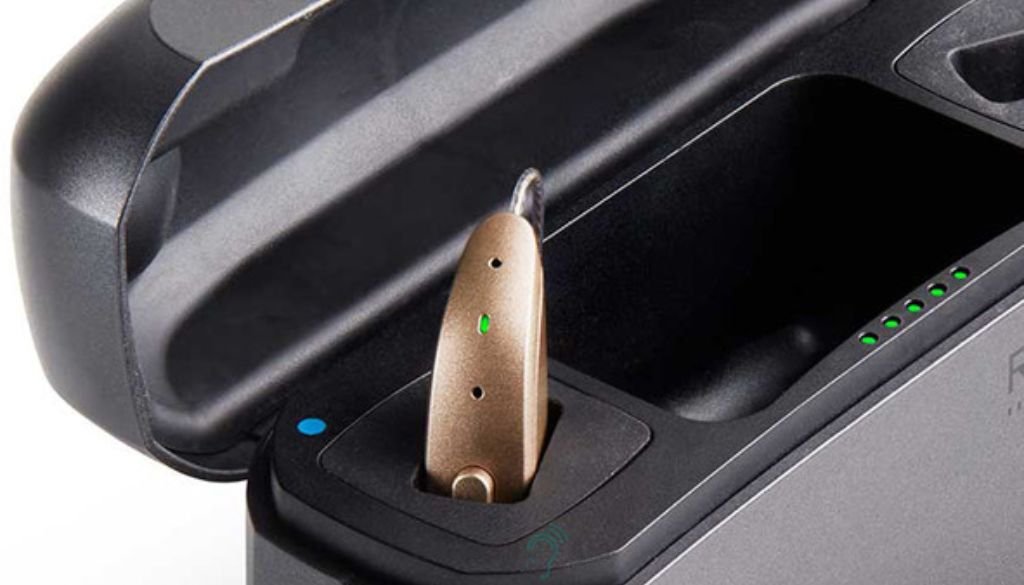Can You Overcharge Hearing Aids? It is vital for users seeking to maximize the efficiency and lifespan of their hearing devices. As crucial tools for those with hearing impairments, hearing aids rely significantly on their battery power. This article delves into the nuances of hearing aid battery management, particularly addressing concerns about overcharging.

We will cover the types of hearing aid batteries, both disposable and rechargeable, and offer detailed guidance on how to maintain them effectively. Key focus areas include strategies to prevent overcharging, especially in rechargeable models, and tips to extend battery life while ensuring consistent performance. By highlighting the best practices for battery care and usage, we aim to empower hearing aid users with the knowledge to prevent overcharging, thereby enhancing both the longevity and functionality of their devices.
Key Takeaways:
- Understanding the battery life of hearing aids is vital for optimal device performance.
- Disposable batteries are the most common option and come in various sizes to accommodate different hearing aid devices.
- Rechargeable batteries offer longer lifespans and reduce waste but require regular charging.
- Proper care and maintenance, such as turning off the hearing aids when not in use and storing batteries correctly, can help extend their lifespan.
- Whether you choose disposable or rechargeable batteries, staying on top of replacements or charging is essential for uninterrupted power.
Read Also: Does Cortexi work for hearing loss?
Disposable Batteries vs Rechargeable Batteries: Which Is Right for You?
When it comes to choosing suitable batteries for your hearing aids, you have two main options: disposable batteries and rechargeable batteries. Each option has its advantages and considerations to keep in mind. Let’s take a closer look at the differences between disposable and rechargeable batteries to help you make an informed decision.
Disposable Batteries
Disposable batteries are widely available and easily replaced, making them the go-to option for most hearing aid users. These batteries come in different sizes depending on the specific hearing aid device. The most common sizes are 312 and 10, but there are also sizes 13 and 675 for different types of hearing aids.
The lifespan of disposable batteries varies depending on factors such as wear schedule, degree of hearing loss, and usage of streaming features. On average, they can last anywhere from 3 to 14 days. However, replacing them regularly is essential to avoid unexpected power loss.
Rechargeable Batteries
Rechargeable batteries offer the convenience of not needing frequent replacements. They can be charged overnight and provide power for a full day. Charging time typically ranges from 3 to 4 hours. Rechargeable batteries have a longer lifespan than disposable batteries, lasting for four to six years before needing to be replaced.
However, it’s worth noting that the battery life of rechargeable batteries can be affected by factors such as streaming usage and environmental conditions. It’s essential to have your hearing aids serviced within the warranty period to maximize the lifespan of rechargeable batteries.
Choosing between disposable and rechargeable batteries comes from personal preference and lifestyle. Disposable batteries offer easy accessibility and replacement options, while rechargeable batteries provide longer-lasting power and reduce waste. Consider your needs and daily routine to determine which choice is right for you.
Understanding Disposable Batteries: Types and Lifespan
Regarding hearing aid batteries, disposable options are widely used and readily available. These batteries come in various sizes, such as 312, 10, 13, and 675, to accommodate different types of hearing aids. The most common sizes are 312 and 10, but it’s essential to check the specifications for your specific device.
The lifespan of disposable batteries can vary based on several factors, including your wear schedule, the degree of hearing loss, and how often you use streaming features. On average, disposable batteries can last anywhere from three to fourteen days. However, monitoring and replacing the battery levels regularly is crucial to avoid unexpected power loss.
Using disposable batteries in your hearing aids provides convenience and ease of use, but it’s essential to stay prepared with replacements to ensure uninterrupted power for your device.
To extend the lifespan of disposable batteries, consider turning off your hearing aids when not in use. This simple step can help conserve battery power. Storing your batteries in a cool, dry place is also helpful, as excessive heat and moisture can affect their performance. By following these guidelines and regularly replacing your disposable batteries, you can maintain optimal power for your hearing aids.
Read Also: Can You Clean Hearing Aids with Alcohol Wipes?
Disposable Batteries: Key Points
- Disposable batteries are widely used for hearing aids.
- They come in various sizes, including 312, 10, 13, and 675.
- The lifespan of disposable batteries depends on wear schedule, degree of hearing loss, and usage of streaming features.
- On average, disposable batteries can last anywhere from three to fourteen days.
- Turning off your hearing aids when not in use and storing batteries properly can help extend their lifespan.
Exploring Rechargeable Batteries: Charging and Lifespan
Rechargeable batteries offer an excellent alternative to disposable batteries for hearing aid users. They provide convenience and peace of mind with their longer lifespan and reduced waste. Understanding how to charge rechargeable batteries and their expected lifespan is essential for maximizing their performance.
Charging rechargeable batteries is a straightforward process. Most hearing aids come with a charging station or a charging case. Place the hearing aids in the charging station or case overnight; they will be ready for use the next day. The charging time typically ranges from 3 to 4 hours, ensuring a full day of power for the hearing aids.
The lifespan of rechargeable batteries varies depending on usage, streaming, and environmental conditions. On average, rechargeable batteries can last for four to six years before needing to be replaced. However, it is essential to note that heavy streaming usage and extreme temperatures can affect the battery life. To ensure the longevity of rechargeable batteries, it is recommended to have the hearing aids serviced within the warranty period.
Rechargeable batteries provide convenience and environmental benefits. With proper care and maintenance, they can provide reliable power for your hearing aids for an extended period. Regularly charging the batteries, avoiding excessive streaming, and keeping the hearing aids in a suitable environment will help maximize their lifespan and ensure uninterrupted performance.
“Rechargeable batteries offer convenience and reduce waste, making them an excellent choice for hearing aid users. With a simple charging process and a longer lifespan, they provide reliable power for daily use.”
Conclusion
In conclusion, understanding hearing aid battery life is crucial for optimal device performance. Proper care and maintenance are essential whether you choose disposable or rechargeable batteries.
One of the key factors in extending battery lifespan is to turn off the hearing aids when not in use. This simple habit can significantly conserve power and prolong battery life. Additionally, a hearing aid dryer is recommended to reduce moisture, as excessive moisture can damage the batteries and affect their performance.
Storing batteries properly is another important aspect of battery care. Please keep them in a cool, dry place and away from direct sunlight. Avoid storing them in extreme temperatures, as this can shorten their lifespan.
For disposable batteries, regular replacement is necessary to avoid unexpected power loss. It’s a good practice to keep spare batteries on hand, especially when travelling or during critical events. On the other hand, staying on top of charging is crucial for rechargeable batteries. Make it a habit to charge them overnight or at a convenient time to ensure uninterrupted power throughout the day.
By following these battery care practices and guidelines, you can maximize the lifespan of your hearing aid batteries and enjoy a seamless hearing experience.
Can you fly with tinnitus? In our detailed article, we explore various aspects and provide valuable insights.
Frequently Asked Questions
Can you overcharge hearing aids?
No, most modern hearing aids have built-in safety features to prevent overcharging. Once the battery is fully charged, the charging process stops automatically.
How long do disposable hearing aid batteries last?
The lifespan of disposable batteries can vary depending on factors such as wear schedule, degree of hearing loss, and usage of streaming features. Typically, they can last anywhere from 3 to 14 days.
What sizes do disposable hearing aid batteries come in?
The most common sizes for disposable hearing aid batteries are 312 and 10. However, sizes 13 and 675 are also available for different types of hearing aids.
How long do rechargeable hearing aid batteries last?
The lifespan of rechargeable batteries varies, but they can last for four to six years before needing to be replaced.
How long does it take to charge rechargeable hearing aid batteries?
The charging time for rechargeable batteries is typically around 3-4 hours.
How can I extend the battery life of my hearing aids?
To extend the battery life of your hearing aids, you can turn them off when not in use, use a hearing aid dryer to reduce moisture, and store batteries properly. Regularly replacing disposable batteries and staying on top of rechargeable batteries are essential for uninterrupted power.



